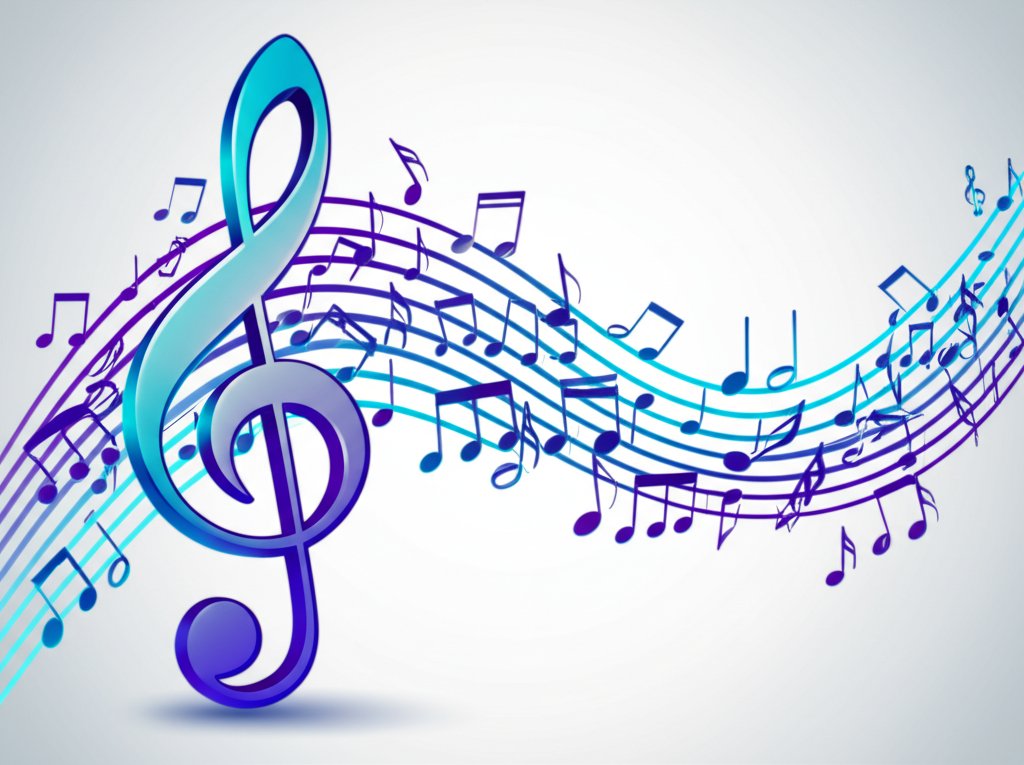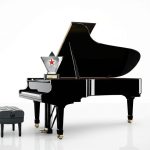For a young pianist, the leap from the solitary practice room to the grand stage is immense. The true test of artistry isn’t just mastering a piece, but making it sing with dozens of other musicians. A piano concerto competition provides that rare, electrifying opportunity: the chance to perform with a live orchestra. This experience is more than just a prize; it’s a transformative step in a musician’s journey, teaching collaboration, leadership, and adaptability in a way no solo recital ever can. It’s where a student pianist becomes a true concert artist.
At a Glance: Your Orchestral Performance Guide
- Master the Art of Collaboration: Understand the crucial differences between playing with a single piano accompanist versus a full, living orchestra.
- Decode the Conductor Dialogue: Learn the non-verbal cues and professional etiquette for working effectively with a conductor.
- Know the Landscape: Discover how different competitions, from community-focused events to international stages, offer varied and unique orchestral experiences.
- Prepare Like a Pro: Get a step-by-step playbook for score study and rehearsal preparation that will build your confidence and earn the orchestra’s respect.
- Navigate Performance Day: Gain practical advice for managing sound, handling unexpected moments, and making your performance a powerful artistic statement.
From Accompanist to Ensemble: A New World of Sound
For most of their training, a pianist’s primary collaborator is a piano accompanist playing an orchestral reduction. This is a crucial step, but it’s fundamentally different from the real thing. An accompanist’s job is to follow you, adapting to your every nuance and hesitation.
An orchestra is not an accompanist. It’s a powerful, living entity with its own momentum and a hundred moving parts. It cannot stop on a dime or adjust instantly to a soloist’s whim. The soloist must learn to lead this massive force while also listening and responding to it. This dynamic demands a completely new set of skills.
| Aspect | Piano Accompanist | Full Orchestra |
|---|---|---|
| Responsiveness | Instant and personal. They follow your lead. | Delayed and collective. It has inertia. |
| Sound | Single timbre. Helps with notes and rhythm. | A complex tapestry of strings, winds, brass, and percussion. |
| Leadership | You are the undisputed leader. | A three-way dialogue between you, the conductor, and the ensemble. |
| Listening | Focused on one other musician. | Requires a “360-degree” ear to hear sections across the stage. |
| Successfully navigating this shift is the first major hurdle. It forces you to develop a “third ear”—one that hears not just your part, but how your sound fits into the broader orchestral texture. You learn to project over a string section without banging, to blend with a solo flute, and to feel the rhythmic pulse of the entire ensemble. |
How Different Competitions Structure the Orchestra Experience

Not all orchestral opportunities are created equal. The type of ensemble, the amount of rehearsal time, and when you get to play with them varies significantly from one piano concerto competition to another. Understanding these models is key to finding the right fit for your experience level and goals. Analyzing the offerings within a broad 2025 Concerto Competition Guide reveals a few common structures.
The Professional Orchestra Gauntlet
High-stakes competitions often feature a resident professional orchestra for the final rounds. This is the ultimate trial by fire.
- Example: The International Young Artist Concerto Competition (IYACC) has competitors perform with the SEEN Worldwide Orchestra for both semi-final and final rounds.
- What it means for you: You’ll be working with seasoned professionals who have limited rehearsal time and expect a high level of preparation. They will be technically flawless and responsive, but you must be ready to lead with confidence from the first downbeat. This environment is exhilarating but demands musical maturity.
The Winner’s Showcase Performance
Some competitions use a piano accompanist for all competitive rounds, with the grand prize being a future performance with the sponsoring orchestra. This model separates the pressure of judging from the collaborative performance.
- Example: The Coronado Philharmonia Orchestra (CPO) Concerto Competition requires finalists to perform with their own accompanist on March 8. The winners are then invited to perform with the full CPO on June 1.
- What it means for you: This is an excellent way to gain orchestral experience without the added stress of a jury watching your every move during the collaboration. It allows you to focus purely on the music-making in the final concert.
The Community Partnership
Many regional competitions partner with excellent local or youth orchestras. These events often have a strong educational focus, providing a supportive environment for a young musician’s first concerto performance.
- Example: The City of Encinitas Youth Piano Concerto Competition is presented in collaboration with the North Coast Symphony Orchestra. Winners receive a contract to perform with the orchestra.
- What it means for you: The musicians and conductor are often passionate about mentoring young talent. There may be more rehearsal time, and the atmosphere is generally more forgiving. This is an ideal setting for a first or second concerto performance.
The Flexible & A La Carte Model
A few innovative competitions offer a modular approach, allowing performers to choose their ensemble based on repertoire and budget.
- Example: The Sempre Musick Concerto Competition guarantees winners a performance with the professional Sempre Musick Orchestra (strings). Performers can pay additional fees for other instruments to create a larger orchestra, accommodating a wider range of concertos.
- What it means for you: This model provides flexibility but requires careful financial planning. The recital fee structure ($120 per minute of performance time) makes the length of your chosen concerto a direct factor in the cost.
Your Practical Playbook: Preparing for the Orchestra

The single biggest mistake a young soloist can make is underestimating the preparation required. Your success with an orchestra is determined weeks before you ever walk into the first rehearsal.
Step 1: Learn the Music Inside and Out
This goes beyond just knowing your own part. Your notes, rhythms, and dynamics must be so ingrained that you can play them on autopilot. This frees up your mental energy to focus on listening and collaborating.
Step 2: Live with the Full Score
Don’t just practice from the solo piano part. Get a copy of the full orchestral score. You need to know it like a map.
- Mark Your Cues: Use a pencil to mark important orchestral entrances just before you play. Note when the principal horn has a solo or when the timpani comes in. Knowing what to listen for is half the battle.
- Understand the Harmony: See how your melodic lines interact with the orchestra’s harmonic structure. Who are you in dialogue with? Are you the melody, the counter-melody, or a percussive element?
- Internalize the Structure: Knowing the score protects you if something goes wrong. If you get lost, you’ll know that the clarinet solo is coming up in four bars and can use that as a landmark to find your way back.
Step 3: Simulate the Experience
Work extensively with a second pianist playing the orchestral reduction. Treat these sessions as performance rehearsals. Practice giving clear physical cues for your entrances after orchestral tuttis. Record these sessions and listen back, asking yourself: “Was my tempo clear and consistent? Was my breathing and phrasing obvious to my partner?”
Step 4: Prepare for the First Rehearsal
You may only get one or two rehearsals. Make every second count.
- Introduce Yourself: Arrive early. Introduce yourself to the conductor and the concertmaster (the first-chair violinist). Professional courtesy sets a positive tone.
- Discuss Tempos Briefly: The conductor will likely ask for your tempos. Be prepared to sing or play the first few bars of each section to demonstrate your ideal speed. Be confident, but also flexible. A great conductor can offer insights that improve your interpretation.
- Listen More, Talk Less: The orchestra doesn’t need to hear your life story. Your professionalism and preparation will speak for themselves. Be ready to play.
Quick Answers: Navigating Common Concerto Questions
A few questions frequently come up as young pianists prepare for their first orchestral collaboration.
Q: Do I really get to choose the tempo?
It’s a negotiation. As the soloist, you are expected to set the character and primary tempo of the piece. However, a conductor may suggest slight adjustments based on the acoustics of the hall, the tendencies of the orchestra, or their own musical interpretation. The goal is to find a shared vision. Be open-minded; their experience can be a tremendous asset.
Q: How much rehearsal time will I actually get?
Far less than you think. With a professional orchestra, a single 2.5-hour rehearsal before the concert is common. Youth or community orchestras may offer two or three. This is why your personal preparation, especially your score study, is non-negotiable. You must be ready to put the puzzle together quickly.
Q: What if I make a mistake during the performance?
Keep going. This is perhaps the most important rule of professional performance. The orchestra and conductor are trained to follow you. If you stop or panic, you create confusion for everyone. If you continue with confidence, the audience will likely never even notice, and the orchestra will be right there with you.
Q: What should I do if the conductor and I have a musical disagreement?
Voice it respectfully and as a question. Instead of saying, “That’s too fast,” try, “I was feeling this section with a bit more room to breathe. Would it be possible to try it slightly slower?” A conductor is far more likely to collaborate with a soloist who is polite and frames their ideas as part of a musical dialogue.
Beyond the Final Bow: Leveraging the Experience
The value of performing in a piano concerto competition doesn’t end with the applause. That performance is a milestone in your development that you can build upon for years.
First, express your gratitude. Thank the conductor personally. If possible, turn to the orchestra and acknowledge them during your bow. These small gestures of respect are remembered and build a professional reputation.
Next, get a recording. Whether it’s a professional video or a simple audio file, this is an invaluable learning tool. Listen to it with your teacher and the score in hand. Did you project enough in the loud sections? Was your rhythm perfectly in sync with the percussion? This objective feedback is priceless.
Finally, update your musical resume. “Performed Rachmaninoff’s Piano Concerto No. 2 with the SEEN Worldwide Orchestra” is a powerful credential. It signals to conservatories, future presenters, and other competitions that you have successfully navigated one of the most challenging and rewarding experiences in classical music. You’re no longer just a pianist; you’re a soloist.
- Texas Piano Competition Recognizes Outstanding Young Talent with Prestigious - November 21, 2025
- International Piano Competitions 2025 Provide Global Stages for Pianists - November 20, 2025
- Piano Competitions for Youth 2025 Open Doors for Young Artists - November 19, 2025










